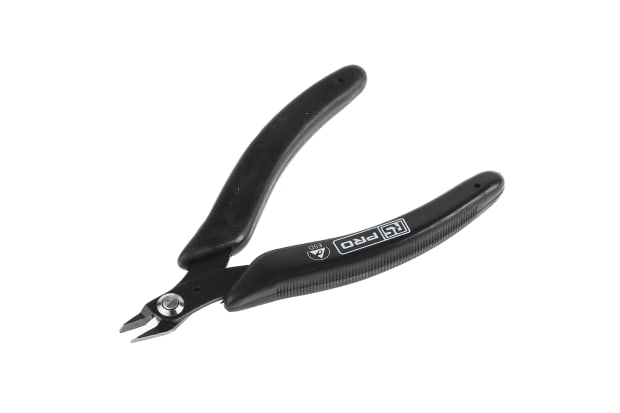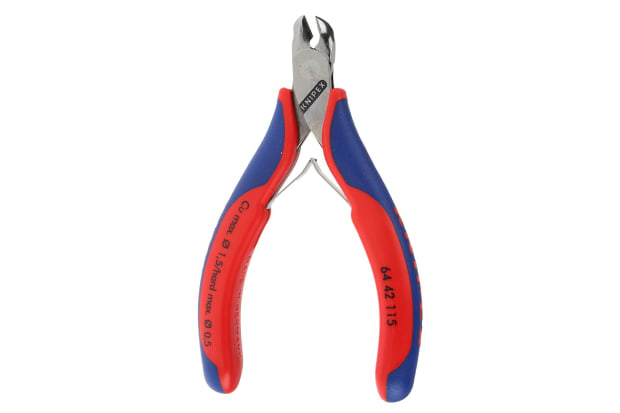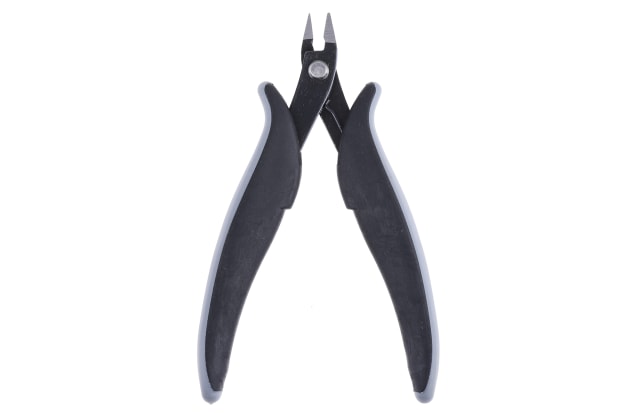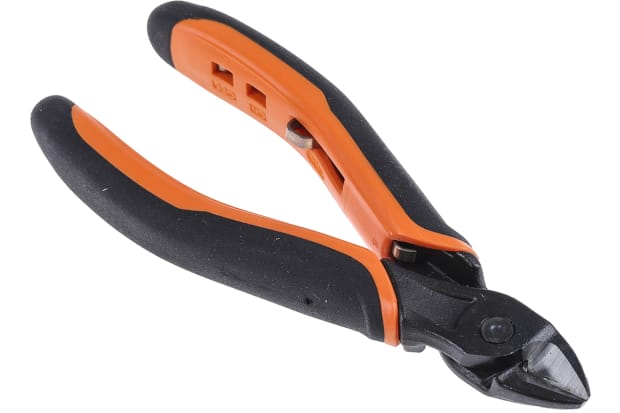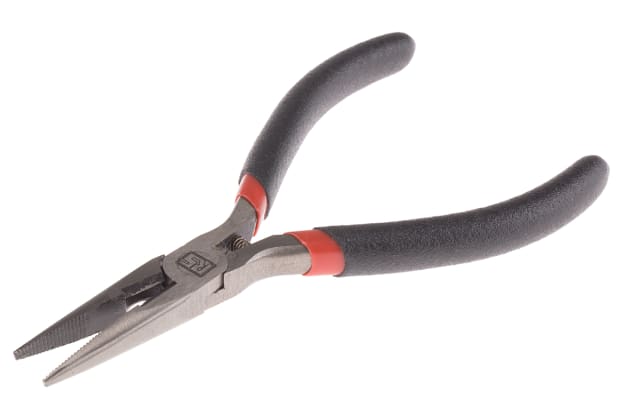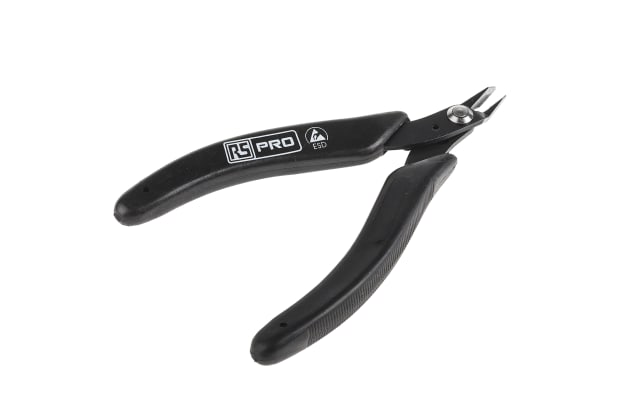- Published 8 Mar 2023
- Last Modified 29 Aug 2023
- 6 min
The Complete Guide to Cutters
In our comprehensive cable cutters guide, we look at the different types available and examine their uses.

Reviewed by Osman Hafeji, Technical Support Engineer (November 2020)
What is a Cutter?
Cutters are hand tools which are used to cut a variety of materials. An average pair has two levers fixed together by a fulcrum, which is located closer to one end. The shorter part is the jaws and the longer section comprises the handles.
These tools use levers to extend and increase the strength of grip. By pressing on the handles, holding power is magnified and directed to the point where the pincers meet.
They are useful for a variety of applications, as they can be used with materials which are potentially too small to be worked by hand.
There is a wide selection of different types available. They can come in various sizes and feature a range of pincers and joints, with the three basic types being locking, adjustable, and non-adjustable. These tools are typically made from steel.
Different Types of Cutters
The sections below show some of the different types of cutters and their uses.
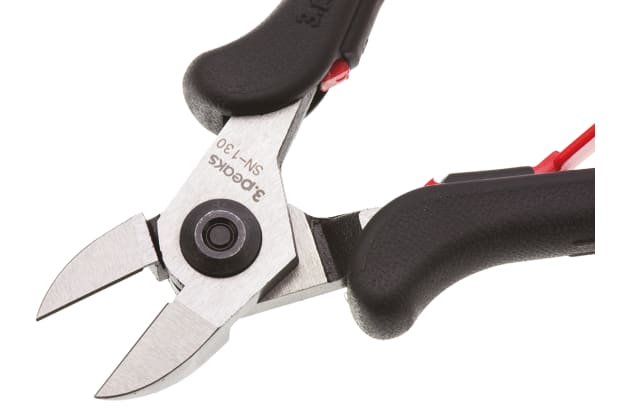
Side Cutters
Side cutters work by indenting and wedging the cable apart. They offer a cleaner finish than scissors or knives. Side cutters should not be used on harder items, such as nails or screws, as these materials can cause damage and might even render the tool unusable.
Ideal for:
- Holding, splicing or cutting leads
- Stripping insulation
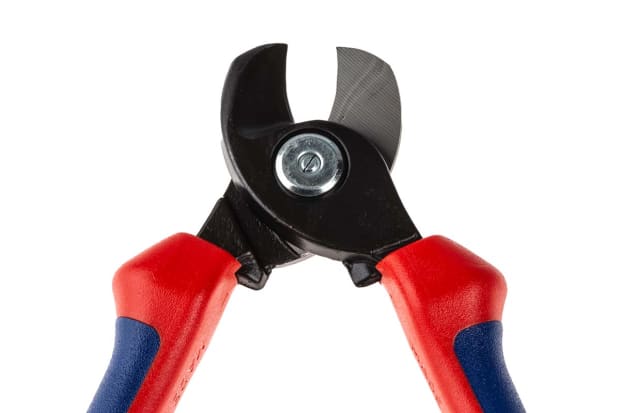
Cable Cutters
Cable cutters are commonly used in electrical applications. They are typically insulated to prevent electrical shocks. However, it is vital not to confuse the plastic or rubber coating on the levers of a non-insulated cable cutter for being electrical insulation.
Ideal for:
- Electrical applications
- Industrial applications
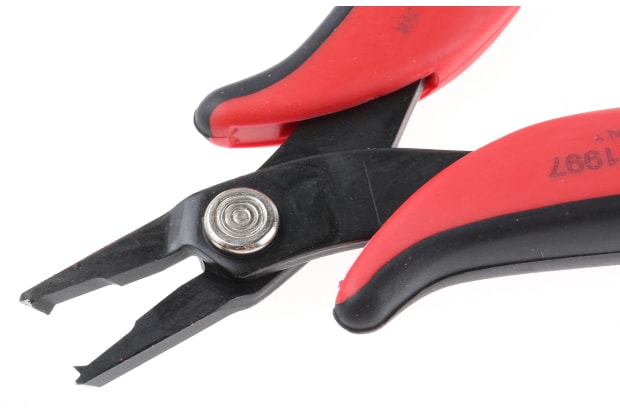
Flush Cutters
Flush cutters include pincers that are angled and narrow, while the handles are lifted away so there is enough space to hold them securely. This type of tool is used for regular, soft and semi-hard metals. It is also worth noting that flush cutters should only be used on flat surfaces where they can sit flush with the object being cut.
Ideal for trimming:
- Eyepins
- Headpins
- Beading wire

End Cutters
End cutters, also known as nippers, have an almost flat head. This allows the tool to cut close against the surface of the material without digging into it.
Ideal for working with:
- Leads
- Springs
- Nails
- Bolts
- Rivets
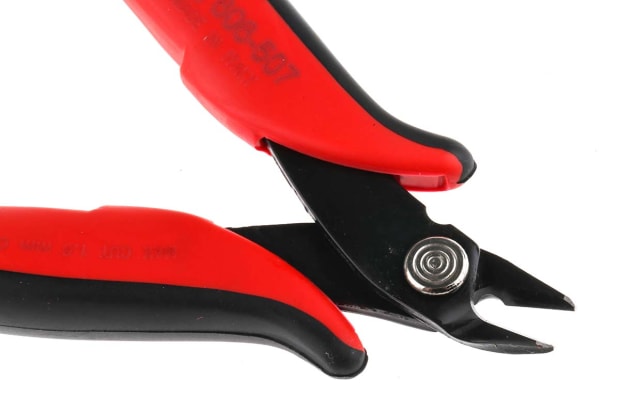
Diagonal Cutters
Diagonal cutters are designed for crimping or wedging cable apart to allow precision cuts. They provide a diagonal cut and are commonly used on soft copper or aluminium electrical conductors.
Ideal for:
- Gripping and cutting
- Stripping insulation from cables
Additional Types of Cutters
While the above sections show the main types, alternatives are also available, including:
These tools work by pulling the rope into the jaws and trapping it. This makes a clean cut and results in no fanning. They are ideal for shearing wire rope.
These tools are designed to create a large amount of torque to easily cut through metal. Thanks to their strength and durability, they can be used on many different types of metal, which has led to bolt cutters becoming a commonly used tool in the construction industry. They are ideal for tasks such as snipping bolts off containers and cutting through thick chains or leads.
Linemans Cutters
Easily identifiable by their pincers, they have a shorter gripping surface at the tip and a cutting surface in the middle. These tools are popular in electrical and communications tasks, as well as construction. They are ideal for grasping, splicing or chopping leads and strip insulation.
Hydraulic Cutters
Hydraulic cable cutters can be used on a variety of conductors, wire ropes and even solid bars. They feature a guillotine-style head shear to minimise jams. These tools are mainly used in the power utility and electrical industry for chopping copper or aluminium power cables and overhead conductors. A range of models is available, such as manual, battery or remote hydraulic head, with different styles of tool heads including ratchet, guillotine and scissor type.
Bent Nose Cutters
These are a common type of plier used to grasp, turn and bend wires. The flat jaws are used for gripping and twisting. It is a common tool in electrical and mechanical industries. They are available with either short or long noses and can easily make sharp bends and right angles in wire, as well straighten it.
Uses of Cutters
These versatile tools have many varied uses and are commonly found in a range of industries. Jewellery cutters and electrician's wire cutters are common types, but these tools provide a wide range of uses, including:
Wires
Side cutters are used on wire and the leads of electronic components, as well as to strip insulation. Stripping refers to safely removing the outer layer without damaging the conductors underneath. If they do get nicked, the connection may break or it could cause an electrical short circuit. Although a knife can do this task, this risks damaging the copper by catching or damaging it and it is much safer to use these specialist tools.
Nails and Screws
For this job, use a pair of bolt cutters. Position the tool at the deepest possible position on the shank of the screw or nail. If it is fastened too tightly to reach the shank, snip the head instead.
Popular Brands
RS Pro
Explore the extensive range of cutters available from RS Pro, our own in-house line.
Knipex
With a wide range available, browse Knipex diagonal cutters to discover the ideal tool for your requirements.
CK
CK side cutters are suitable for a wide variety of industries and tasks. Explore the full range today.
Bahco
Bahco has a wide range of tools available to meet your needs, including Bahco side cutters.
Common Sizes
Various types and brands are available, but you should be aware that they can also be categorised by size. This can relate to one of two specifications - jaw length or overall tool length. Both are typically measured in millimetres (mm).
Some of the most common include:
Diagonal Cutters vs Side Cutters
The two names are often used interchangeably, so it can be difficult to understand the differences and similarities between side and diagonal. Additionally, there are many types of cutters, each with subtle differences. Each type can typically be used for multiple tasks and applications.
Both diagonal and side cutters are designed to cut wire or cable at an angle. They press and wedge the wire, causing indentations as well as simply cutting. These tools tend to be durable and hard-wearing, designed for tough professional applications.
One of the key differences is that diagonal cutters are often better suited to smaller, more delicate cutting tasks, whereas side cutters are ideally suited to larger-scale applications. While this isn't always the case, it is useful to know as a general rule.
How to Use Cutters
Here are some handy tips for using electrical wire cable cutters, as well as important safety procedures to follow to avoid injury and complete the task quickly and easily:
- Wear safety goggles to protect against airborne particles
- Try to cut at right angles and avoid wiggling the tool or bending wire back and forth against the edges
- Avoid using them on nuts and bolts - use a wrench for this task instead
- Avoid cutting hardened cable unless the tool is specifically designed for this task – it is better to use sturdier tools for this task as thinner types, such as needle-nose cutters, could incur damage
- Oil tools regularly with a drop of oil on the hinge – this will make them easier to use
- Avoid exposure to excessive heat
- Do not use cushioned levers when working with electrical wiring as they are not insulated and do not offer a sufficient level of protection
- Choose tools that have a grip span between 6cm and 9cm to prevent hands or fingers from getting pinched when the tools are closed
- Make sure the edges of the tool are sharp as blunt or worn edges need a lot more force to make an accurate cut
- Ensure tools are clean and sharp because greasy or worn-down edges can compromise safety and could cause repetitive strain injuries with prolonged use
- Refrain from hammering on tools to cut objects
- When using pliers, pull on them instead of pushing away when applying pressure because if the tool accidentally slips, the user could sustain an injury
Related links
- Cutters and Spanners: The Basics of a Home DIY Toolbox
- A Guide to Soundproofing Materials
- A Comprehensive Guide to Solenoid Valves
- Electrical Tape Types & Alternatives Guide
- Complete Flight Case Guide
- Comprehensive Gasket Guide: Types and Seal Materials
- A Complete Guide to Pipe Cutters
- The Complete Guide to Screwdrivers
